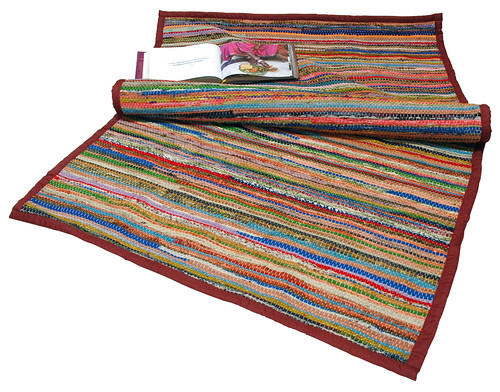And that thing is weaving.
 |
| Photo by: New Internationalist, courtesy of Flickr |
And these two elements are:
Dialogue
Setting
One without the other simply would not work in any short story or novel; especially if you want the reader to continue your story and not stop at page one.
As part of my business is editing, allow me to share a few things I have learned from the authors I have edited.
First, the author is usually strong in either dialogue or setting, and this strength carries throughout the book.
 |
| Photo by: Avery Studio, courtesy of Flickr |
Three, many authors write in blocks. They may write a terrific dialogue scene (because this is their strength) then add a snippet of setting, and then there they are again, back to dialogue. Each area is separate and single, though both are in the same story.
Weaving the two simply means that with dialogue, you have setting, and with setting you have some dialogue and that you balance the two throughout your story or book. It can mean that you have quite a bit of setting, but that you break it up with dialogue or thought processes.
Here's an example:
George Mahooney hated flies. They buzzed around his ears, and pecked leisurely at his withered flesh. To swat them, was useless, and spent energy George didn’t have. His movements were slower now that he was ninety. His breath was heavy and tortured.
He arose from his bed, allowing the even breathing of his wife to whisper of past dreams in the already warming room. They’d spent the majority of their lives here, making love, talking, and arguing about things George no longer remembered.
He kissed her once, taking in the cinnamon scent in her hair and skin. She always smiled, even in her sleep, and George had always wondered why.
In moments she would awaken and the quiet of the morning would be replaced by her endless singing. Her quiet hands would busy themselves in the kitchen. She would make his breakfast: Oatmeal with milk, dry toast and butter, a glass of orange juice and a side order of cinnamon roll.
George walked barefoot into the living room and through the door to the front porch of their country home. It was the absence of flies he noticed first in the warm August air. He hadn’t looked at the clock, so he’d probably beaten them awake.
George smiled at his cleverness, and sat down on the old rocker. He pushed himself forward, then backward, then forward again and watched the birds—they were brown and speckled with dusty tan—unlike the birds of yesterday that came every day in the summer to peck at his overgrown fruit trees (From The Awakening of George Mahooney, a short story).
Is there actual dialogue in this sample? No, but there is plenty of thought process, and that's what's important here.
Here's another example with obvious dialogue:
I nodded my head. Very slowly, Joshua released his hand from over my mouth. Spit had accumulated on his hand, and he wiped it against his Levi’s. I smiled inwardly.
“We’re going to play cowboys and Indians,” Luke reported. “You’re the squaw.”
“OK,” I said. “What do I do?”
Luke grinned, his large teeth glistening in the afternoon air. “Come with me,” he said. “I’m the chief.” He turned and strode away, Joshua sandwiching me between them.
I almost laughed. “You gonna take your shirt off?” I asked. Luke had already turned the corner and was probably getting set up for battle. “I don’t know of any Indians who wear shirts.”
“Good idea, squaw,” he said, reaching down with his pudgy fingers. He had the blue cloth over his face when I made my escape. I heard a second of grunting and got a brief glance at Joshua’s fat stomach bouncing before I burst free.
I dashed to the end of the lawn, turned the corner, and ran swiftly to the end of the street. There was no sound from my house. Evidently Joshua was still struggling to get his shirt off (From, A River of Stones, a YA novel).
What's important here is that I've incorporated both dialogue (or thought processes) in both examples, though the examples are very different.
In my own writing I focus on weaving both setting and dialogue and sometimes have to return and add a bit more setting: dialogue is my strong point.
What's yours?

No comments:
Post a Comment
Thank you for your comment.